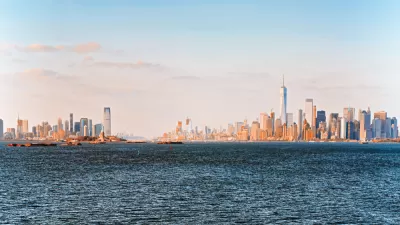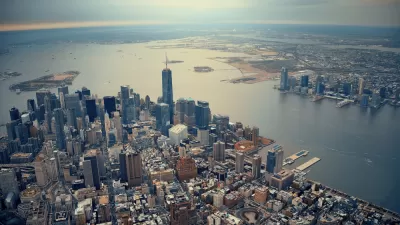A new report focusing on design professionals and architects in New York finds that these industries are on a strong growth path and create a significant impact on the local economy.
Urban Omnibus talks with the lead author of the report, which is titled Growth by Design.
"Urban Omnibus: For those who haven't read the report in full, please summarize your key findings.
David Giles, The Center for an Urban Future: We established beyond all doubt that New York City's design industries, including architecture, are not only an important part of the city's economy but one that has been growing rapidly over the last decade and will likely continue to grow. Despite the 2008 crash and the depressed economy that followed, the number of design firms in the city rose 15 percent since 2001, which is a much faster rate of growth than most other industries. New York has 3,969 firms in architecture, landscape architecture, fashion, graphic design, industrial design, and interior design. That's 33 percent more design firms than Los Angeles, the next largest city. The New York metro area has 40,470 designers, a majority of whom don't work at design firms, and that's 75 percent more than the next largest city which, again, is Los Angeles (with 23,160 designers).
When you look at the proportion of employed people in New York who work as designers, you'll see the city has a much higher concentration of designers than any other major U.S. city with the exception of San Francisco, which has an equivalent concentration but a smaller number. Economists measure an industry's geographic concentration in order to get a sense of how much it is exporting to other places; if the concentration is much above the national average, then it is likely serving more than just local needs. New York's design cluster is well-above the national average. That's a good sign."
FULL STORY: Growth by Design

Alabama: Trump Terminates Settlements for Black Communities Harmed By Raw Sewage
Trump deemed the landmark civil rights agreement “illegal DEI and environmental justice policy.”

Planetizen Federal Action Tracker
A weekly monitor of how Trump’s orders and actions are impacting planners and planning in America.

The 120 Year Old Tiny Home Villages That Sheltered San Francisco’s Earthquake Refugees
More than a century ago, San Francisco mobilized to house thousands of residents displaced by the 1906 earthquake. Could their strategy offer a model for the present?

In Both Crashes and Crime, Public Transportation is Far Safer than Driving
Contrary to popular assumptions, public transportation has far lower crash and crime rates than automobile travel. For safer communities, improve and encourage transit travel.

Report: Zoning Reforms Should Complement Nashville’s Ambitious Transit Plan
Without reform, restrictive zoning codes will limit the impact of the city’s planned transit expansion and could exclude some of the residents who depend on transit the most.

Judge Orders Release of Frozen IRA, IIJA Funding
The decision is a victory for environmental groups who charged that freezing funds for critical infrastructure and disaster response programs caused “real and irreparable harm” to communities.
Urban Design for Planners 1: Software Tools
This six-course series explores essential urban design concepts using open source software and equips planners with the tools they need to participate fully in the urban design process.
Planning for Universal Design
Learn the tools for implementing Universal Design in planning regulations.
Clanton & Associates, Inc.
Jessamine County Fiscal Court
Institute for Housing and Urban Development Studies (IHS)
City of Grandview
Harvard GSD Executive Education
Toledo-Lucas County Plan Commissions
Salt Lake City
NYU Wagner Graduate School of Public Service





























